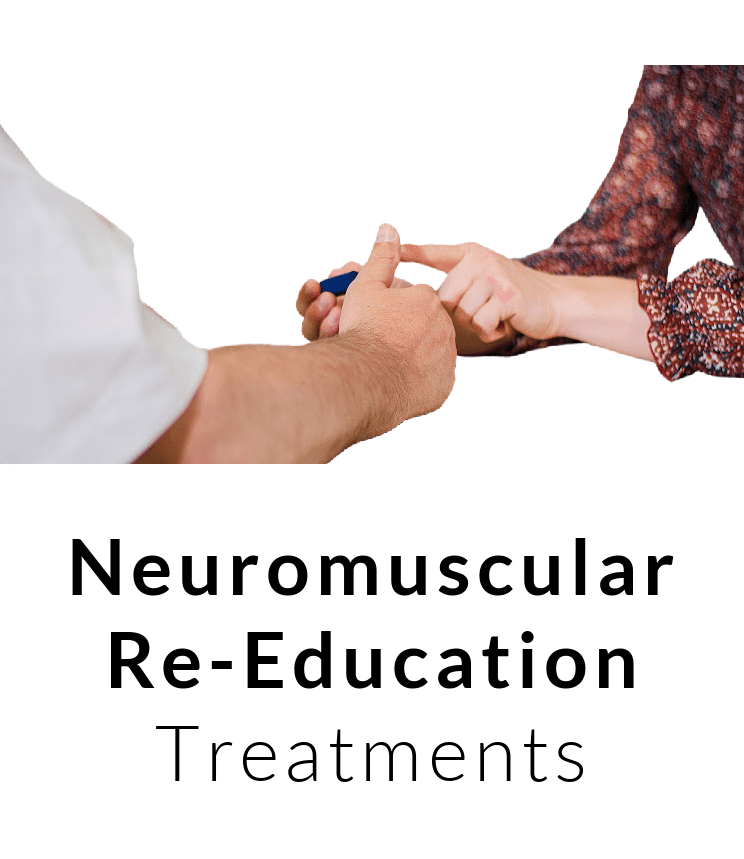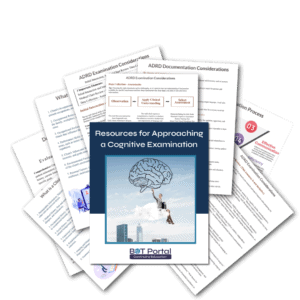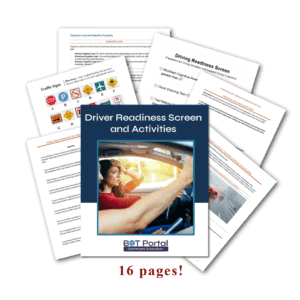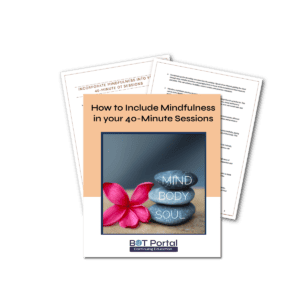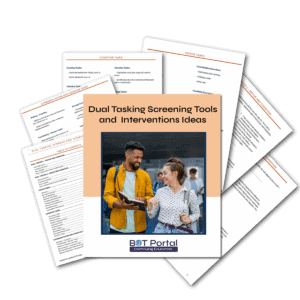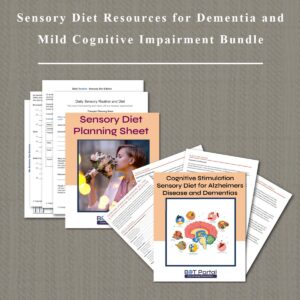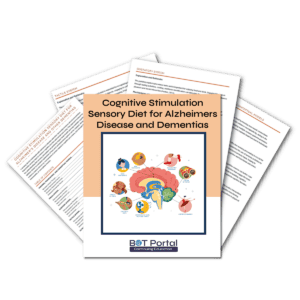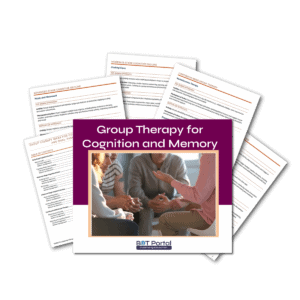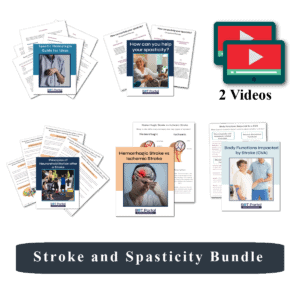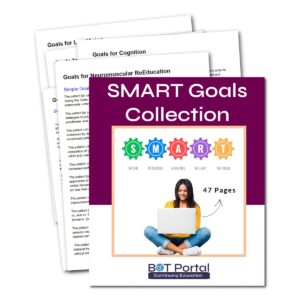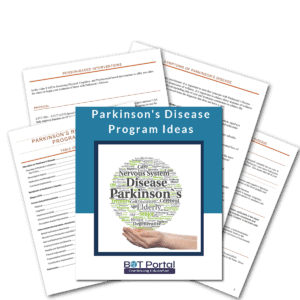
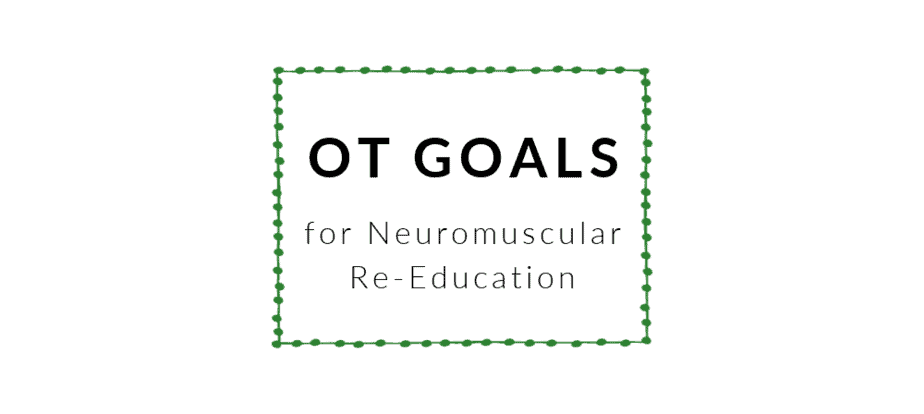
OT Goals for Neuromuscular Re-Education
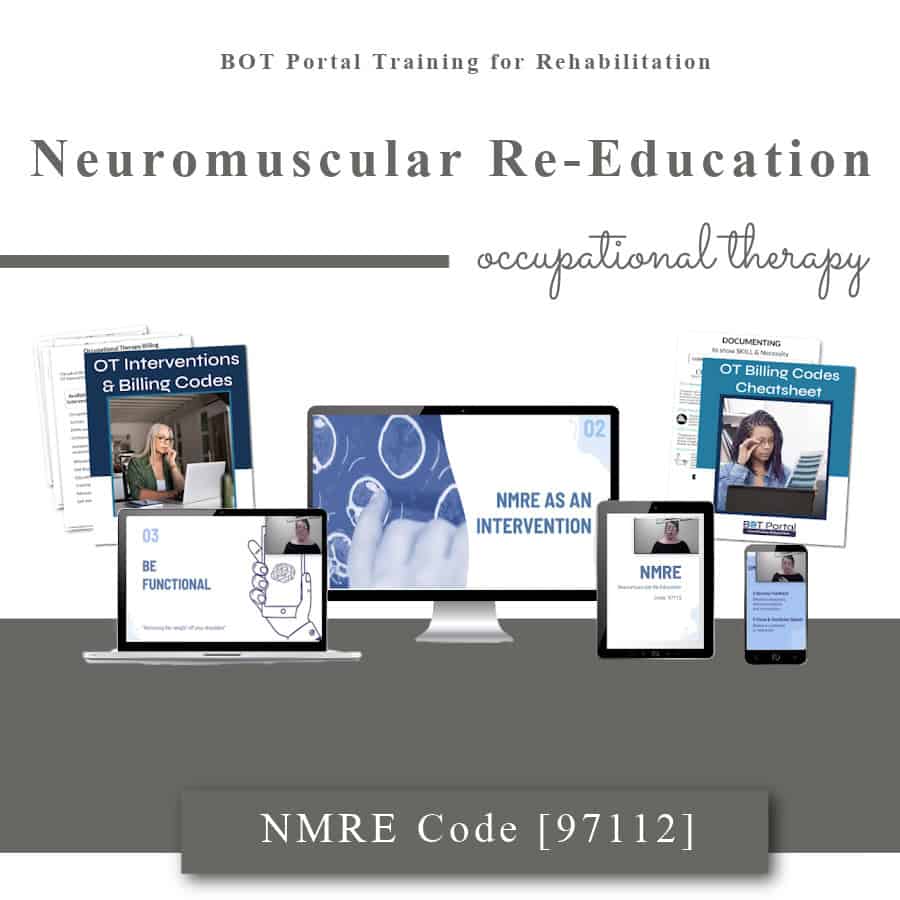
Neuromuscular Re-Education is a foundational component of the occupational therapy process – especially when working with neurological-based diagnoses, balance deficits, coordination deficits, and motor learning! Don’t forget to brush up on treatments, documentation examples, and more in The Portal!
Simple Goals for Neuromuscular Re-Education
The patient [or caregiver] demonstrates an understanding of adverse compensatory methods during the motor learning process as evidenced by verbally recalling [xx/xx] preselected statements within [xx] weeks.
The patient [or caregiver] communicates understanding of positioning and daily mobility strategies to prevent contractures and skin breakdown as evidenced by verbal discussion with practitioner and demonstration of learned skills within [xx] days/weeks.
The patient will demonstrate a reduction in abnormal muscle tone of [specific body part] as evidenced by increased measurement of uninhibited active range of motion or functional movement pattern by [xx degrees] within [xx] weeks.
The patient will demonstrate improvement in normal movement patterns as evidenced by completion of [occupation-based activity] without presence of compensatory movement patterns within [xx] weeks.
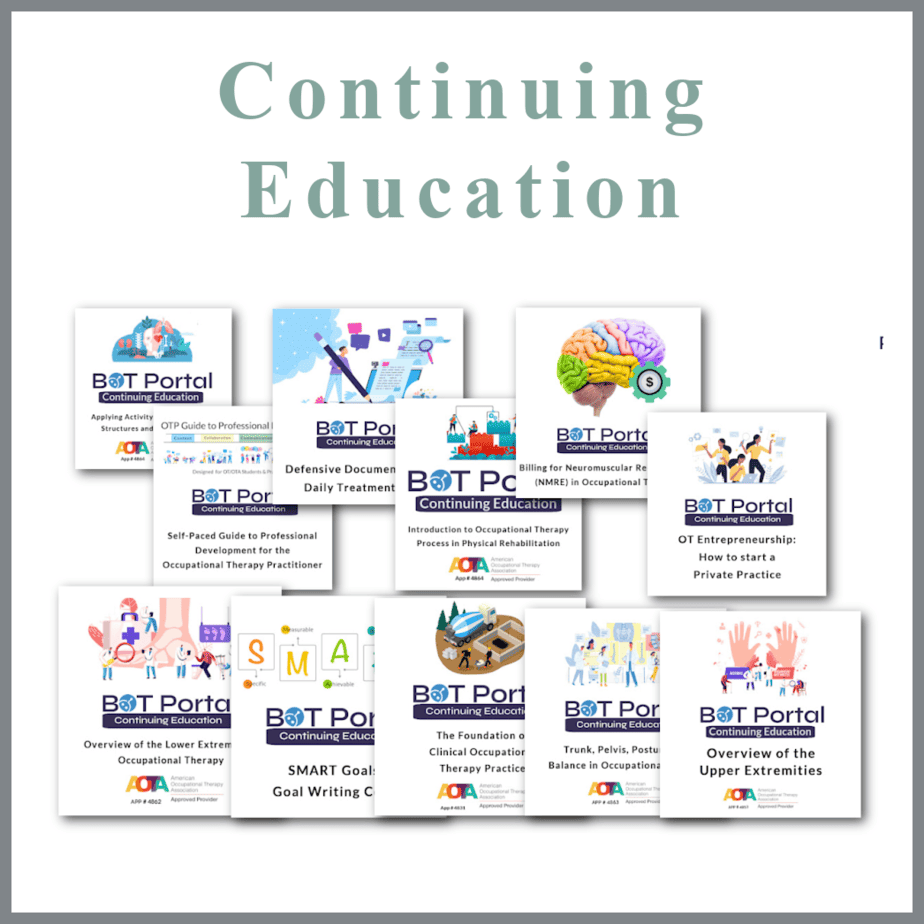
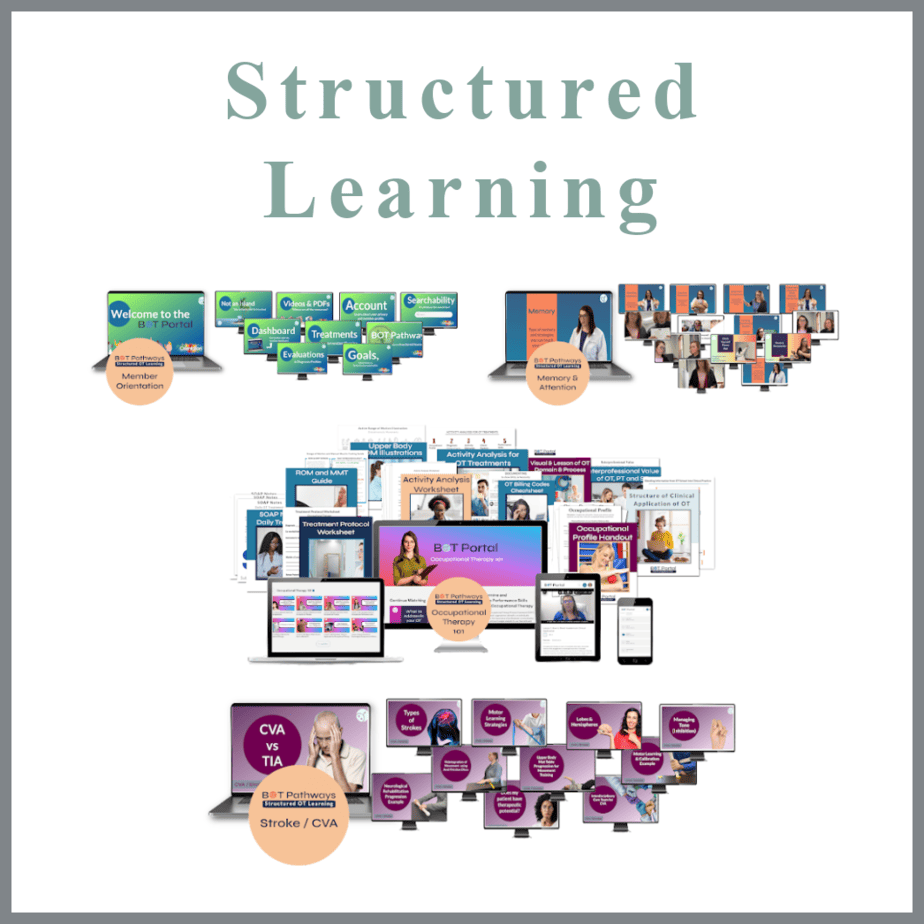
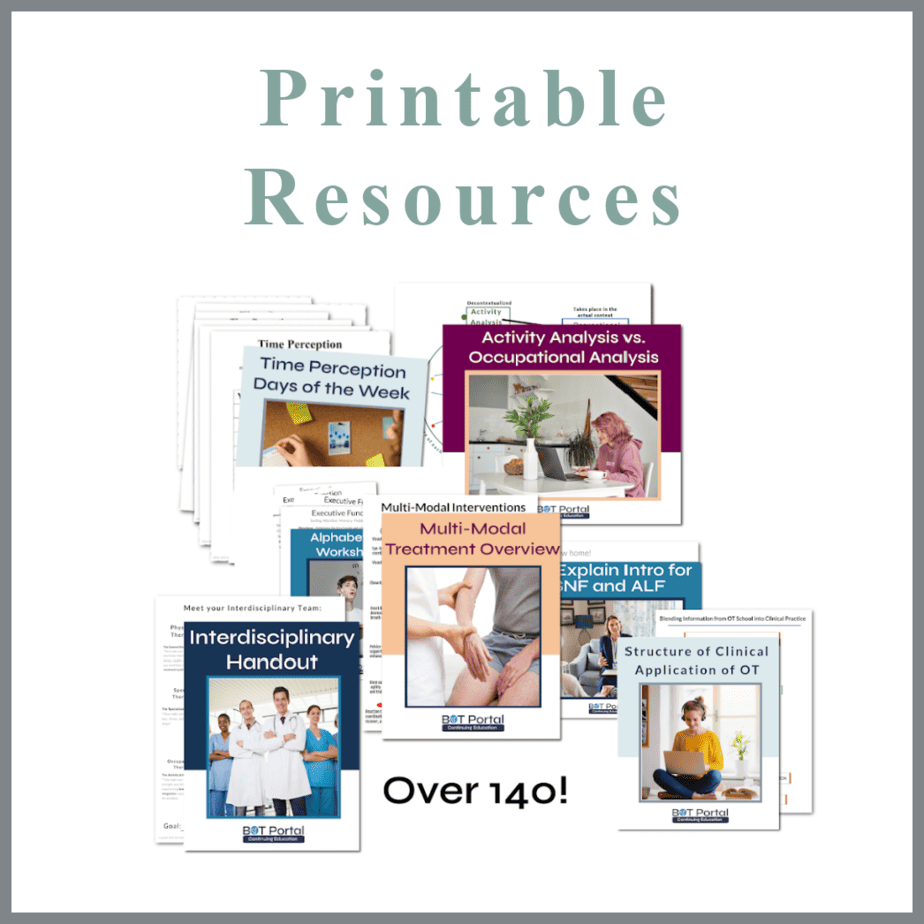
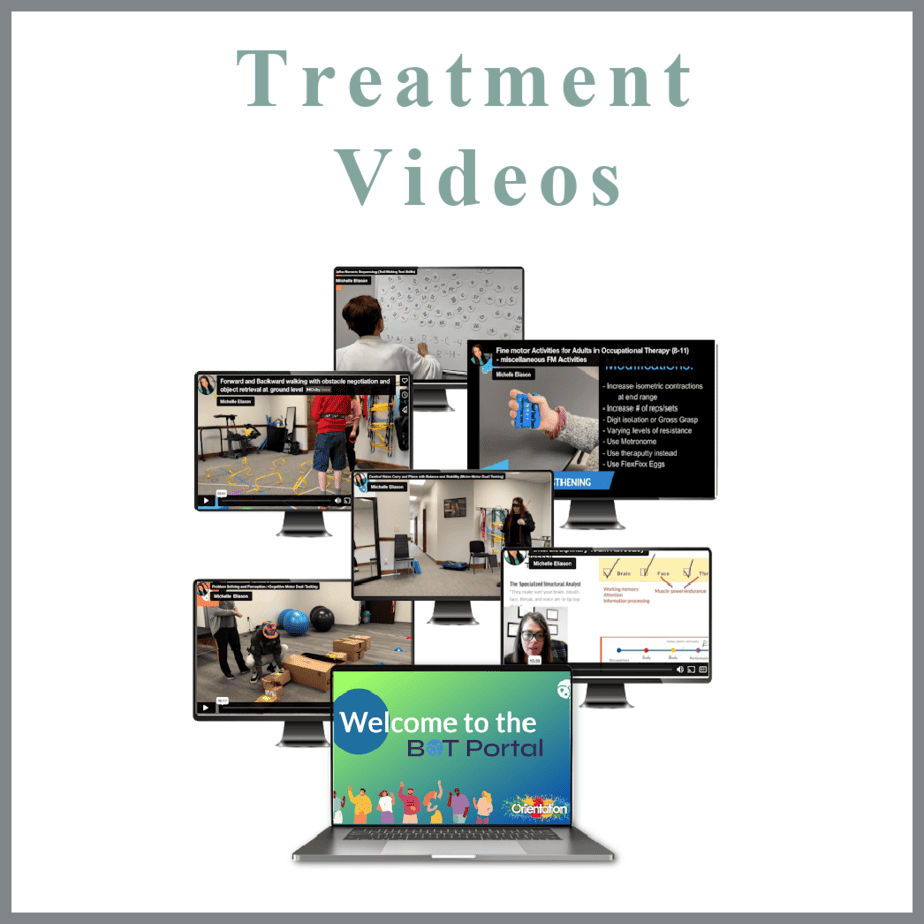
Membership Perks
Two Membership Options!
Your investment gives you resources to save you stress, self-doubt, and burnout as you become a confident and competent practitioner who can stand up for your professional point of view and scope of practice.
Goals Continuums and Progressions for Neuromuscular Re-Education
Dynamic Sitting Balance
The patient will first improve dynamic sitting balance (and later standing balance), posture and gait as well as in intra-limb coordination as evidenced by an overall point improvement in the clinical ataxia scale SARA of greater than or equal to 8 points in 24 weeks.
Checkpoints:
- Complete 100% of SARA initial assessment (15%)
- 6-8 sessions
2 sessions: Educate client on crucial compensatory Movement techniques including replacing rapid multi joint movement with slower movements with sequential single joints movements (15%)
2 sessions: Rehearse movements for goal directed stepping (15%)
2 sessions: Star point balance performance training (15%)
- Tandem line with narrow BOS single-leg tap out and touch line with LOB x 60 ft (90%)
- SARA Re-Test with outcome improvement (100%)
9 Hole Peg Test
The patient will improve bilateral fine motor coordination and prehension as evidenced by improved score of at least 7 seconds on the R handed 9 hole peg test according to normative data for those diagnosed with MS within 12 weeks.
9 Hole Peg Test (Normative Data established for MS)
Dominant side (Goal 17.81 seconds)
Non-Dominant (Goal 18.49 seconds)
R 26 seconds , L 23 seconds
Checkpoints:
- Improved original score by 2 seconds (25%)
- Improved original score by 4 seconds (50%)
- Improved original score by 6 seconds (75%)
- Improved original score by 7 seconds (100%)
Balance Confidence and Balance Insecurity
See BOT Portal
Sensory Processing and Sensorimotor Interactions
See BOT Portal
Sensory Processing and Sensorimotor Interactions
See BOT Portal
Increase Active Range of Motion in Presence of Spasticity
See BOT Portal
Self-Management of Spasticity
See BOT Portal
FMA-UE
See BOT Portal
Decreased Compensatory Movement Strategies
See BOT Portal
Sitting Balance
See BOT Portal
Dual Tasking – Auditory Memory, Recall, and Balance Restoration
See BOT Portal
Browse the Resource Store!
Don’t want to pay for each PDF individually? No problem! The BOT Portal Membership comes with all printable resources and more!

